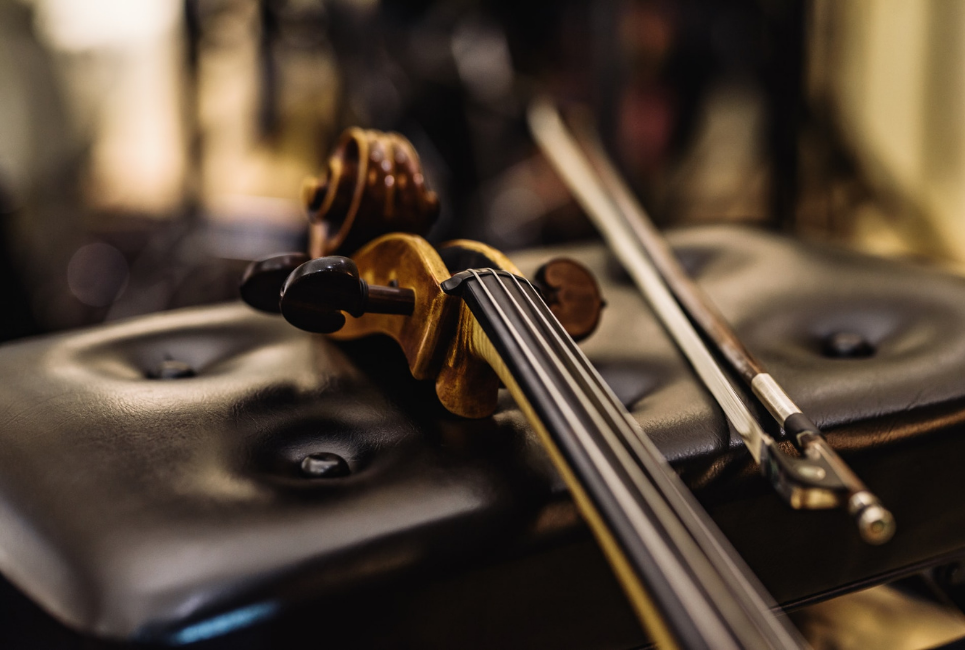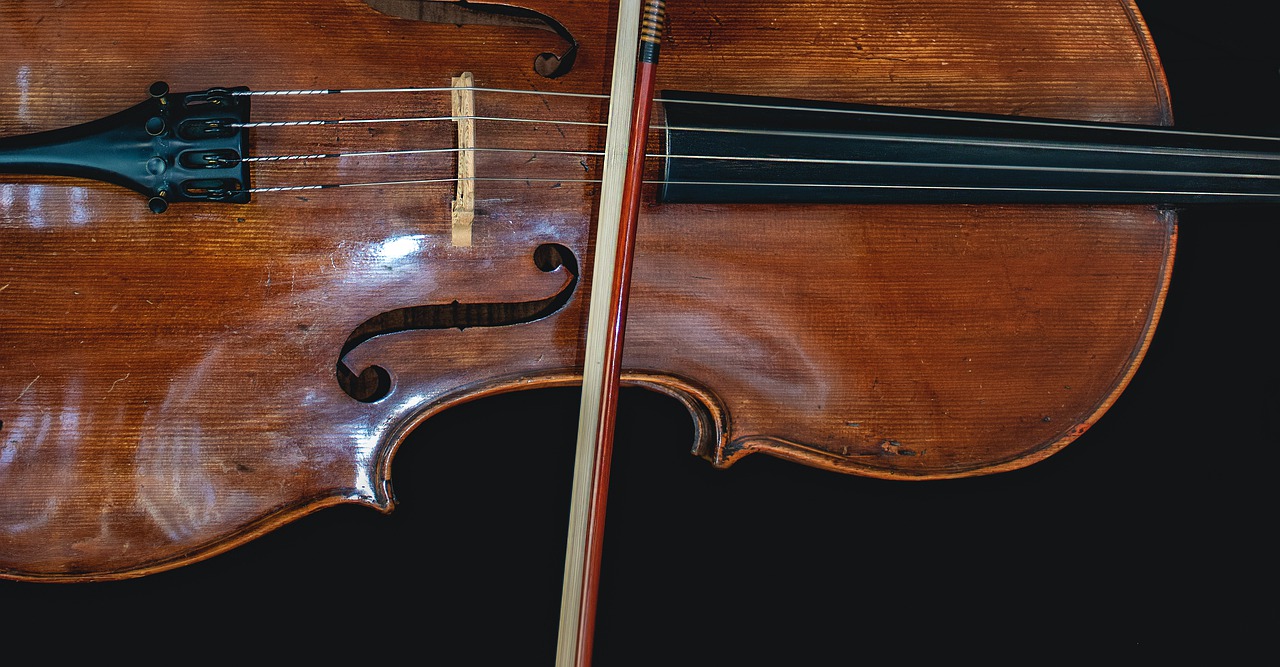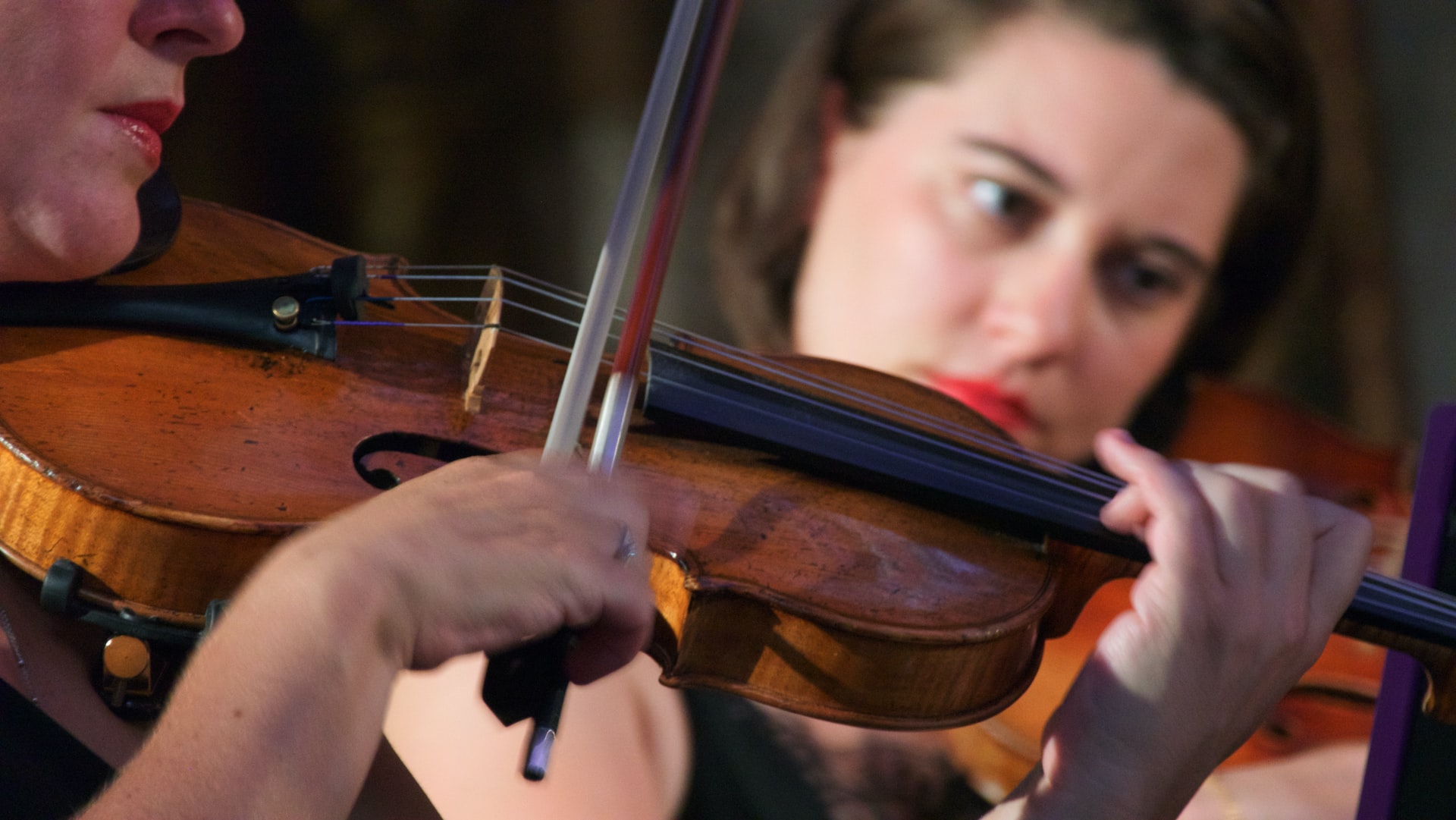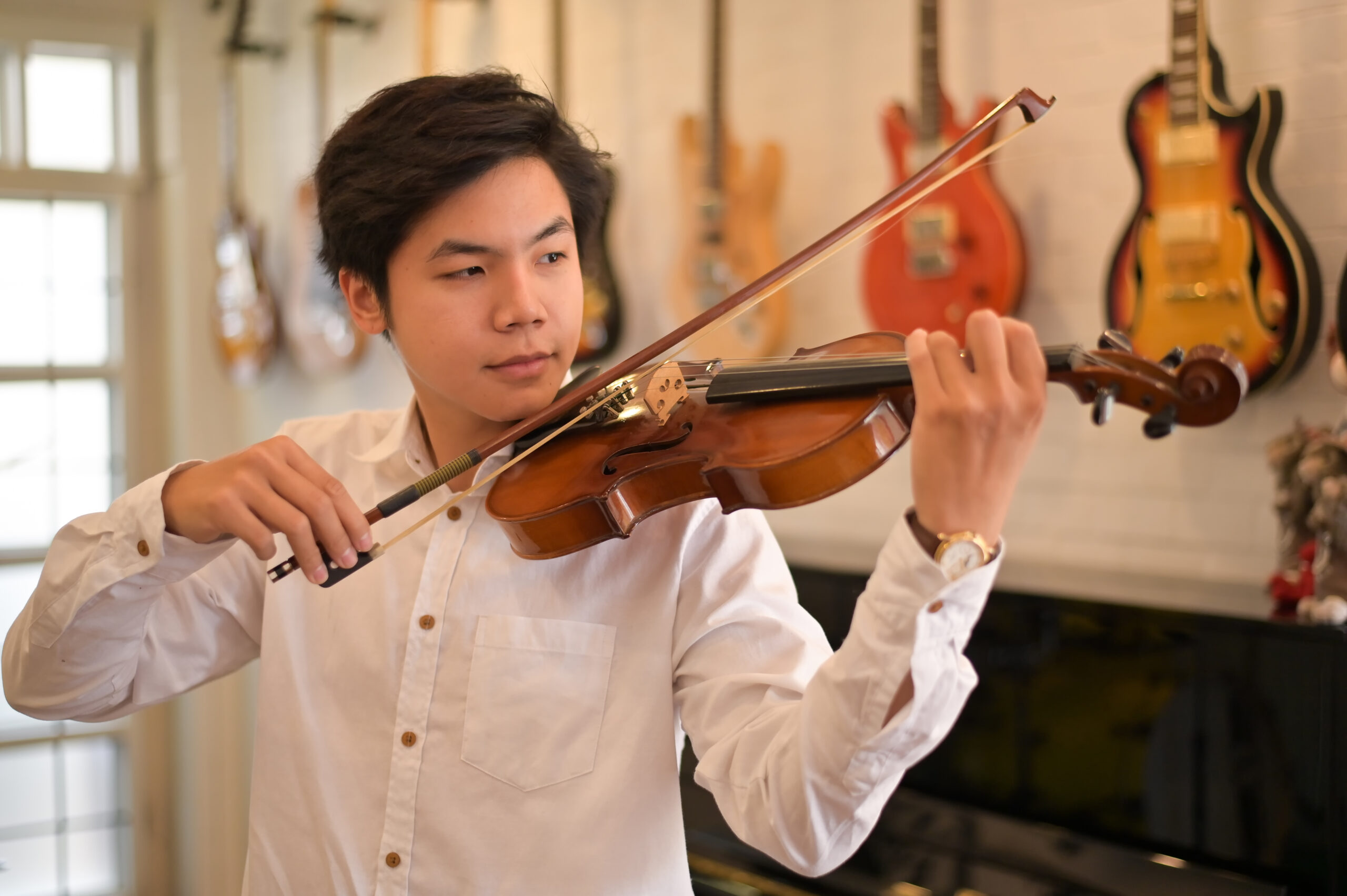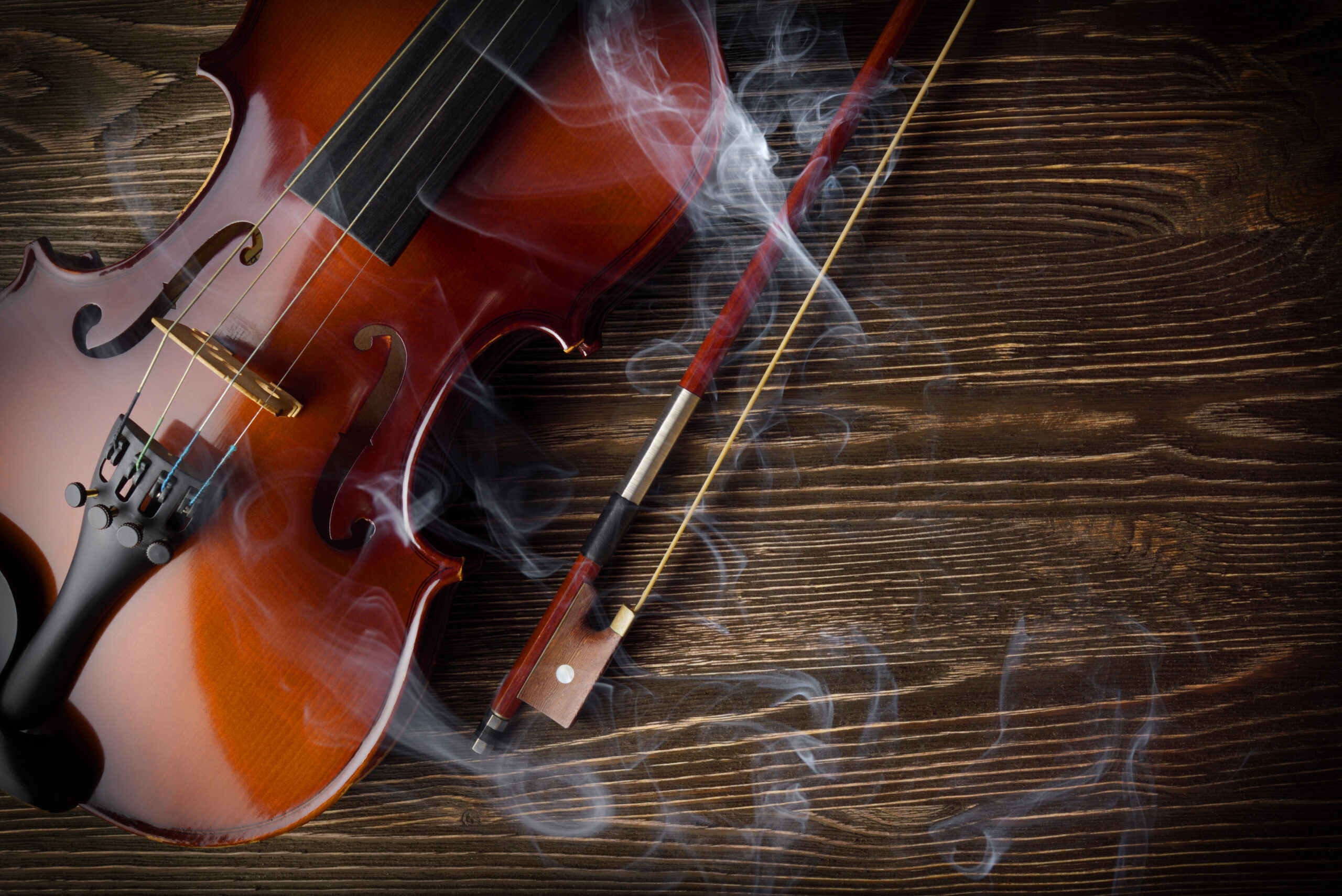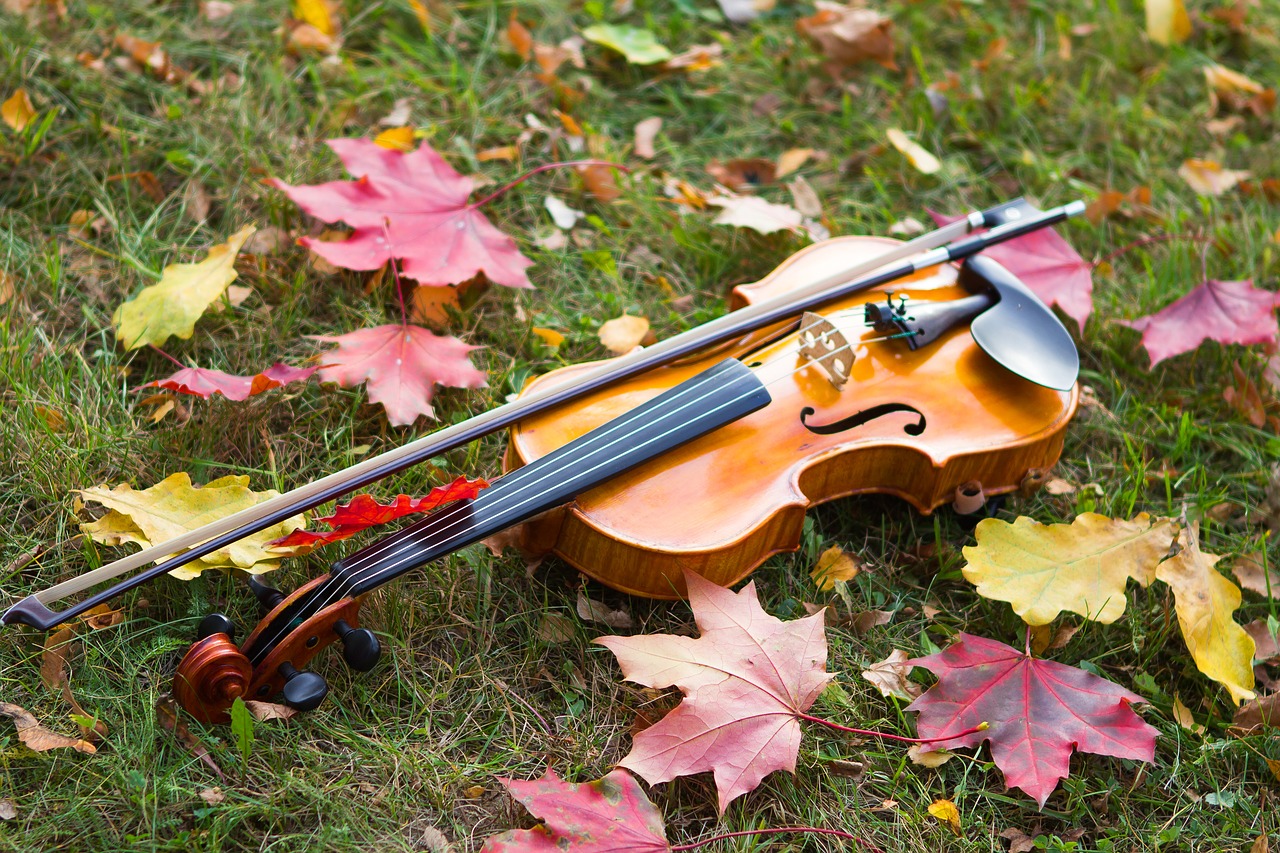- What is a Fretted Cello and Does it Work? - December 13, 2021
- Violin Bow Parts Explained: All You Need to Know - November 10, 2021
If you’re new to playing the violin, one of the first things you may notice is all the different parts of the instrument and the bow. It is definitely one of the more intricately constructed instruments. Having a bow is also a unique part of stringed instruments – instead of just picking up your instrument and playing, like a saxophone or flute, you have to have another piece of equipment to produce the sound. You should know that the bow is just as important, if not more important than the violin! So, it’s important to know all the different parts and how they work together to help you make music.
Hair
The part of the bow that contacts with the string is called the hair. This is almost always real horsehair, from a horse’s tail. The hair is cleaned and then refined down into a hank that is put onto the bow.
It is important to not touch the hair of the bow with your fingers! This is because the oils on your skin can make the hair oily, and then they won’t stick to the strings of the instrument anymore. You can tell someone plays with their thumb on the hair instead of the stick because the hair near the frog will turn from the usual whitish color to a dark gray or brown.
Rosin is put onto the bow to make the hairs grip to the string better, which is what produces the sound of the instrument. Otherwise, the hair would just slide around on the string, and it wouldn’t make any sound.
It’s normal for some hairs to break occasionally on your bow. However, if they are breaking all the time, then you should take notice. If the hairs are breaking in the middle of the hair, then you may be pressing too hard on the strings with your bow. Try lightening up the amount of weight you are putting down on the strings.
Sometimes, especially with older violin cases, there may be mites in your case that cause your bow hair to break. If you have an old violin case and you open it and see that the hair is just falling off the bow, your case may have mites. It is very easy to get rid of them, just take the violin and bow out and put them in a safe place, and put the case in direct sunlight for a few hours. (You should never expose your violin to direct sunlight.)
When you do a lot of playing on your bow, you may sometimes need to change the hair of your bow. This is called a rehair. It is not something you should try by yourself, since it takes a fair amount of skill and specialized tools. If you can’t afford to buy yourself another bow if you break yours, it’s best to take your bow to someone who knows how to do a good job fixing it. Most professional violinists change their hair once or twice a year, so it is an infrequent part of bow maintenance but an important one.
Stick
The stick of the bow is the hard wood or fiberglass part of the bow that is parallel to the hair. This has always been made of different types of wood. Usually, student bows are made with “brazilwood,” which is a label for many different types of wood sourced from Brazil. Higher-end professional bows are usually pernambuco wood. In modern times, it is possible to get a bow not made from wood at all – some new bows are made out of carbon fiber or other synthetic materials. These bows have the advantage of being significantly less breakable than a regular wooden bow.
After you finish playing your violin for the day, you should clean your strings and instrument off with a dry cloth, and it’s also important to clean the stick of the bow off as well. Take a dry cloth and put it between the stick and the hair, and wipe the rosin dust off. If the rosin dust builds up on the stick it will harden and become difficult to remove later on.
Tip
The tip is what violinists call the end of the bow opposite the frog where you place your hand. In terms of weight, it is the lighter end of the bow. This means that when playing softly, usually, it is better to play at the tip because it has a lot less weight than the frog. On older bows, the tip is usually made of ivory, but many bow makers opt for an ivory substitute or plastic nowadays.
Behind the tip is one end of where the hair is held. When your luthier changes your bow hair, he removes the tip and anchors one end of the hair hank behind the covering.
The very tip of the tip is very easy to break. If you drop your bow on a hard floor or swing the bow in the air and hit something, chances are the tip is going to break. It is important to always make sure that you take care of your bow, but also check your surroundings – a common way the tip of the bow is broken is by not looking over your left shoulder before you play and hitting your bow against a wall.
Frog
The frog is the other end of the bow. It is not really known why it is called the frog, but the name has stuck forever. The dark black wood of the frog is usually ebony wood, the same material that the fingerboard is made of. On modern bows, especially carbon fiber and synthetic bows, the frog can be made of an ebony substitute. Your frog is where you hold the bow, and it has several parts.
The eyelets of the frog are the dots on both sides of the bow. This is really just for decoration. Some bows have no eyelets. The ferrule is the metal part that touches the hair. The ferrule keeps the bow hair flat and consistently spread. You don’t need to know these two parts very well, because if they’re doing their jobs, you won’t notice them.
Screw
The screw is an important part to know. It is what controls how tight your bow hair is. When you turn the screw to the right, it tightens your bow hair. The screw turns a mechanism on the inside of your frog to pull the hair back or relax it.
You should never turn your screw so far so that the bow hair becomes too tight. This can damage the bow to the point that you can break it to where it can’t be fixed. It is also important to loosen the bow hair before you put the bow back into the case. You should never leave your bow hair tight when you put your bow back into the case because it is good to let the bow relax between uses.
Some people prefer to play with the hair a little bit loose, and others like the bow hair very tight. You should follow your teacher’s instructions to let them tell you how tight it should be. Your bow stick is made to naturally have a slight curve toward the hair. You will know your hair is too tight when that curve goes away, and the stick is completely flat, or worse, the curve is going the other way, making it look like a bow from a bow and arrow. Making the hair this tight can ruin your bow, so following your teacher’s guidelines is important.
It is also important to never remove the screw entirely. Only loosen the screw enough to where your bow hair becomes relaxed but no more than that. If the screw comes out of your bow, then your frog can come out as well.
Leather
The leather of the bow sits on the stick right above the frog. Its purpose is to give you a surface to place your hand where you can hold the bow without it sliding. This can be a piece of actual leather or plastic. Some violinists have found that surgical tubing, if you can locate it, can provide a better grip. Over the course of the life of the bow, the leather can become worn down, so it is important to take your bow to your luthier so he can replace it. Don’t worry that it has to be replaced – good instrument maintenance involves replacing the leather when it becomes unusable. It is also possible that you don’t like the feeling of the leather on your bow, or you need more or less thickness of leather to fit your hand – these are also reasons to get it replaced.
Winding
The winding is the silver above the leather. This has no real purpose except as decoration. Some older bows had whalebone instead of silver, and it is possible to ask your luthier to get a fabric winding instead. Sometimes on bows, the silver winding can start to unravel. When this happens, you should take your bow to your luthier to get it replaced.
When your bow breaks
It is never a bad idea to ask your teacher or luthier for advice when something on your bow breaks. Generally, issues with the bow have to be fixed by someone like your teacher or luthier who knows how to fix them without damaging the bow. Although it may seem like some small fixes are able to be done by yourself, it is worth asking for advice the first time. It is very easy to damage your bow by trying to fix it if you don’t know how to fix it properly!
Good bow maintenance
When you put your violin and bow back in the case, you should unscrew the bow slightly so that the hairs are relaxed. This is healthy for the bow to relax the stick. You should also wipe off the stick with a dry cloth to remove the rosin.
Speaking of rosin, it is good to know when to rosin your bow. Some teachers suggest putting rosin on your bow every time before you play. In general, some reasons that should let you know your bow needs more rosin are if you need to press more to get the sound you want, if you feel that your bow is sliding a little bit, or if you’re having trouble making enough sound at all because the bow isn’t pulling the string enough. It is possible to put too much rosin on your bow, so again, ask your teacher for advice.
To put rosin on your bow, it’s a good idea to put the rosin in your right hand and the bow in your left. That way, the rosin dust from the cake of rosin doesn’t get onto your left hand and onto your instrument.
It might seem like to rosin your bow, you just need to lightly drag the bow across the rosin as if you were playing the rosin like a string. However, this is not true. You need to apply a little bit of pressure onto the rosin with your bow and instead of dragging long strokes, move back and forth in little increments. This ensures that the rosin is actually getting onto and staying onto the hair. Go back in forth in little pieces across the whole bow, and you will notice that the rosin coat becomes more evenly distributed.
Be careful with the rosin cake – they always shatter if you drop them, and then you will have to get another one and also have a sticky mess to clean up.
If you do get any rosin dust on your hands, you should wash them before you touch your violin.
Hopefully, this guide has helped you learn more about your violin bow! If you take care of it well, it will help you achieve great things on your life-long journey of making music.
Looking for more interesting readings? Check out:

